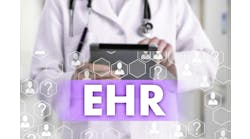Following up on a Government Accountability Office (GAO) report from earlier this year on patients’ accessing their health records, a new blog post from the agency explores some of the reasons why people don’t use their electronic health records (EHRs) more.
Indeed, a GAO report from the spring noted that healthcare providers who participated in the Medicare Electronic Health Record Incentive Program offered nearly 9 out of 10 patients the ability to access their health information online. However, GAO found that relatively few of these patients accessed their records online, and patients typically did so in response to a medical visit. To this end, the GAO WatchBlog blog, via direct interviews with patients, just recently examined some of the reasons why people don’t use their electronic health records, even if they do have access.
For some of the core reasons mentioned by patients, as reported by GAO, healthcare providers usually give patients access to their medical records through a patient portal. However, patients often receive access to a different portal for each provider they visit, and must manage separate login information for each one. The patients GAO interviewed were frustrated with the amount of time and effort it took to set up these portals, understand each portal’s user interface, and manage all the different passwords, according to the department’s report.
What’s more, most providers routinely offer access to lab test results, information about allergies, and current medications. However, patients said that the information available to them was incomplete and inconsistent across providers, and were unclear about whether it could be electronically downloaded, transmitted, or aggregated in one place.
Further, patients did say that they were able to use these portals to better communicate with their healthcare providers, track health information, and share this information with other providers. GAO found that patients usually accessed their records before or after a visit with their provider. Patients also described using these portals to access “convenience features,” such as appointment scheduling and reminders, and medication refill requests, according to the report.

